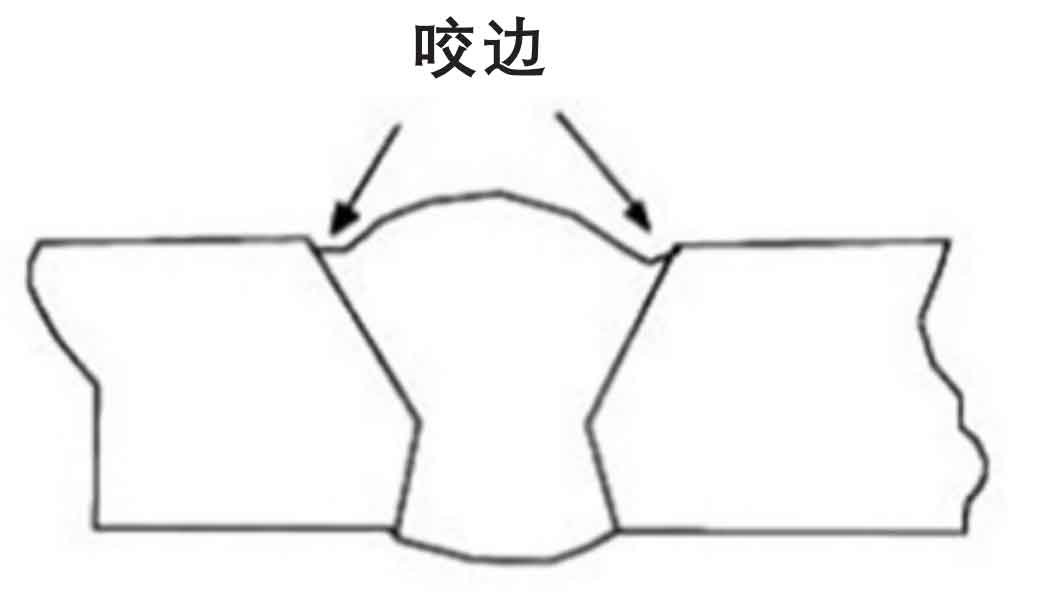Preventing Weld Undercut Made Easy: Secret Techniques Revealed
Preventing Weld Undercut Made Easy: Secret Techniques Revealed
Blog Article
Recognizing the Causes and Solutions for Undercut Welding in Steel Construction Procedures
In the world of metal construction processes, the incident of undercut welding positions a considerable difficulty that demands an extensive understanding of its causes and practical services. The elaborate interplay of various factors during welding procedures can bring about this unwanted sensation, influencing the architectural stability and general high quality of the welded joints - Preventing weld undercut. By exploring the origin of undercut welding and exploring efficient restorative measures, producers can raise the standard of their craftsmanship and guarantee the manufacturing of flawless metal elements
Usual Sources Of Undercut Welding
Frequently neglected in metal construction, undercut welding takes place due to numerous factors that demand precise interest and experience to be effectively reduced. Furthermore, incorrect welding methods, such as utilizing the incorrect welding angle or take a trip rate, can likewise add to damage formation. The option of welding specifications, such as voltage, present, and cable feed speed, plays a significant role in the occurrence of undercut welding.
Impact of Incorrect Welding Parameters
Incorrect welding parameters can considerably jeopardize the stability and high quality of welded joints in metal manufacture procedures. The influence of inaccurate welding specifications materializes in various ways, leading to architectural weak points and flaws in the welded components. One critical facet influenced by incorrect welding specifications is the penetration deepness of the weld. Inadequate warm input due to reduced welding currents or exceedingly high travel speeds can cause insufficient fusion in between the base metals, resulting in incomplete joint penetration and damaged bonds. Alternatively, too much warmth input triggered by high welding currents or sluggish traveling rates can result in burn-through and excessive reinforcement, developing a breakable and unsteady weld framework. Furthermore, incorrect criteria such as incorrect voltage setups or inaccurate electrode angles can contribute to irregular weld bead accounts, lack of blend, and enhanced chances of flaws like undercutting. Consequently, precise focus to welding specifications is paramount to make sure the manufacturing of top notch welds with the desired mechanical residential or commercial properties and architectural integrity.
Impact of Improper Lantern Angle
Inappropriate lantern angle in welding procedures can dramatically influence the top quality and honesty of the last weld joints in steel manufacture procedures. The lantern angle plays a crucial role in determining the heat input and distribution during welding. When the lantern angle is wrong, concerns such as damaging can develop. Damaging is a typical welding problem where a groove develops along the weld toe, compromising the joint and compromising its structural integrity.
A lantern angle that is as well steep can lead to insufficient infiltration, insufficient fusion, and increased spatter. On the various other hand, a lantern angle that is too superficial can lead to extreme penetration, burn-through, and distortion of the base product. Preventing weld undercut. Appropriate torch angle is essential for making certain constant weld quality, strength, and look
To avoid undercutting and various other problems brought on by inappropriate torch angles, welders have to be educated to maintain the right torch try this out angle throughout the welding procedure. Routine surveillance and modification of torch angles throughout welding can help attain sound welds with marginal problems.
Duty of Inadequate Welding Methods

Another facet of poor welding strategies is inappropriate weld prep work. Insufficient cleaning of the base metals, incorrect joint design, or insufficient side prep work can all add to undercut welding. Inadequate shielding gas insurance coverage or utilizing the wrong YOURURL.com type of gas can result in insufficient combination and the formation of undercut defects.
To resolve the function of insufficient welding techniques in steel construction processes, it is essential to give detailed training for welders. Proper education and learning on welding specifications, joint preparation, and securing gas choice can aid stop undercut welding and guarantee top quality welds in steel construction tasks.
Efficient Solutions for Undercut Welding
Addressing undercut welding in steel fabrication calls for carrying out effective options to enhance weld top quality and structural stability. One of the main solutions to deal with undercut is to adjust welding specifications such as voltage, current, and take a trip rate to guarantee correct heat input and blend. By fine-tuning these settings, welders can stop excessive melting of the base metal and filler product, decreasing the chance of undercut formation.
Furthermore, correct joint preparation is vital in preventing undercut. Making sure tidy base metal surfaces without contaminants and utilizing the ideal bevel angle can help promote much better weld infiltration and reduce the danger of undercut - Preventing weld undercut. Utilizing ideal welding techniques, such as oscillating the lantern or weaving, can additionally aid in distributing warm uniformly and loading the weld joint adequately, reducing the opportunity of undercut issues
Furthermore, selecting the appropriate welding consumables, including electrodes and filler steels, is crucial in mitigating undercut. Using materials with proper chemical compositions and mechanical residential properties can add to attaining audio welds with marginal undercut. Normal inspection and quality view publisher site assurance measures should also be executed to discover and attend to undercut problems immediately, making sure the general stability of fabricated metal components.

Verdict
Finally, recognizing the reasons and options for undercut welding in metal fabrication processes is crucial for attaining high-grade welds. By resolving typical causes such as incorrect welding criteria, inappropriate torch angle, and inadequate welding techniques, welders can protect against damaging and guarantee strong, sturdy welds. It is necessary to take note of these elements and implement reliable options to improve the total welding process and end product top quality.

Report this page